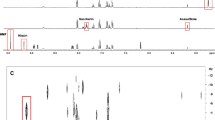Summary
The measurement of the solid fat index is of great importance to determine the technological quality of fats used in the agro-food industry. Pulse or continuous wave low resolution nuclear magnetic resonance may be used to perform the measurements fairly rapidly, and very simply. IUPAC has published several methods for sample preparation, with precise indications as to the procedure to follow. The reproducibility is however often inadequate, whereas the repeatability is very good. This may simply be due to an incorrect calibration of the apparatus, introducing a constant bias in the results of a particular laboratory. It may also be due to slight differences in the tempering the samples undergo. Because of their polymorphism, the crystallization of triglycerides is in fact greatly influenced by this thermal pretreatment. A need for reference samples was therefore felt, in part to verify the instrument adjustment but, more important, in order to control the whole sequence of actions performed before the measurement itself. The French Institut National Agronomique and the Institut des Corps Gras carried out a ring test involving 9 experienced French laboratories to determine standard SFI curves, using several thermal pretreatment procedures. Reference samples and the corresponding SFI values for 4 of the most commonly used fats are now available to quality control laboratories. This study is now to be extended, through the BCR, to the rest of Europe.
Similar content being viewed by others
References
Atta-Ur-Rahman (1986) Nuclear magnetic resonance. Springer, Berlin Heidelberg New York
Abragam A (1986) Principles of nuclear magnetism. Oxford University Press, London
Farrar TC, Bekker ED (1971) Pulse and fourier transform NMR; introduction to theory and methods. Academic Press, New York
Sanders JKM, Hunter BK (1988) Modern NMR spectroscopy. Oxford University Press, New York
Breitmaier E, Voelter W (1974) C13 NMR spectroscopy. Verlag Chemie, Weinheim, Bergstr.
Martin ML, Delpeuch JJ, Martin GJ (1980) Practical NMR spectroscopy. Heyden
Van Putte K, Van Den Enden J (1973) J Phys Sci Inst, pp 910–912
Van Putte K, Van Den Enden J (1974) J Am Oil Chem Soc 51:316–320
Van Putte K, Vermaas L, Van Den Enden J, Den Hollander C (1975) J Am Oil Chem Soc 52:179–181
Shukla VKS (1983) Fette Seifen Anstrichm 85:467–471
IUPAC (1982) Standard methods for the analysis of oils, fats and derivatives. 1st supplement, part 6, 6th edn. Pergamon Press, Oxford
Rutledge DN, El Khaloui M, Ducauze CJ (1988) Rev Franç Corps Gras 4:157–162
SAS-STAT Version 6, SAS Institute Inc., Box 8000, Cary NC 27512-80000
Bugner E, Feinberg M (1989) Agriculture, food chemistry and the consumer. Proceedings of Euro Food Chem V., INRA, Paris, pp 571–575
Author information
Authors and Affiliations
Rights and permissions
About this article
Cite this article
Rutledge, D.N., Diris, J., Bugner, E. et al. Biological reference materials for the verification of sample preparation and measurement by low resolution NMR. Fresenius J Anal Chem 338, 441–448 (1990). https://doi.org/10.1007/BF00322513
Received:
Issue Date:
DOI: https://doi.org/10.1007/BF00322513



